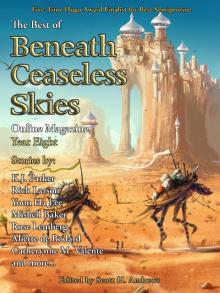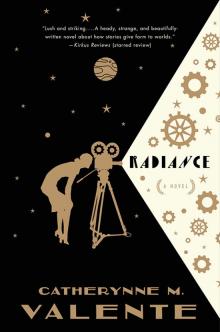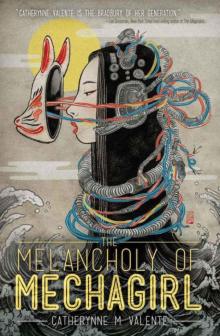


Cairo
Max Rodenbeck
Along with trade and crafts, learning declined. By the eighteenth century only twenty madrasas still functioned in Cairo, down from the seventy-five in al-Maqrizi’s day. “The hands of greed reached into the waqf endowments, and their supervisors neglected to spend on students and teachers” is how the Egyptian polymath and historian Ali Pasha Mubarak described this period a century later. “This increased year by year until teaching stopped and the books were sold. The schools became barns and animal pens.” While Napoleon’s doctors reckoned infant mortality at 60 percent, the only local method of learning medicine they observed in 1800 was for students to memorize long-obsolete texts by copying them over and over.
Superstition went unchecked. Visions of doom took hold of the people. They were so strong that on at least three recorded occasions in the troubled eighteenth century half the citizenry fled to surrounding fields and desert when rumors spread that the end of the world was at hand. Their fear was not surprising: hunger, poverty, disease, and strife had reduced the city’s population to under a quarter of a million by 1800.
Europeans who ventured to Cairo now recoiled at its medieval squalor. They were appalled to see the rag-clad rabble cowering at the sight of their mongrel Turco-Mameluke overlords, splendidly dressed thugs who would, as a French visitor said, “shed the blood of a man as they would that of cattle.” The common people were backward and fanatical. Widespread ignorance had left them with what Carsten Niebuhr called “a relish for very insipid diversions.”
The once great trading city exported no manufactures. It imported rice from the Carolinas, and even spices were now procured from European merchants. The grand stone-built institutions of the old Mameluke sultanate had cracked, buckled, and collapsed. The newer buildings were mostly poor affairs, cheaply built of wattle and mud. The city’s arteries had sclerosed; most were twisted alleyways, wrote Niebuhr in 1761, “which terminate not in any principal street, so that those who live at the bottom of them can converse from the back of their houses, yet must walk a quarter of a league before they can meet.” Outside the decaying city walls were vast untended mounds of garbage and whole quarters of derelict houses. Egypt, visitors reported, was oppressed, underpopulated, and ripe for the picking by some ambitious European power. Her capital, the beautiful Mother of the World, had moldered into an unsightly old age.
* * *
*1 Bayn al-Qasrayn means Between the Palaces, a reference to the Eastern and Western Palaces of the Fatimid caliphs that flanked the street. The palaces were long ago replaced by Mameluke funerary institutions, but the name for this stretch of the Qasaba endures—even into the title of a work by the novelist Naguib Mahfouz. All that remains of the palaces are some finely carved wooden lintels that can be seen in Cairo’s Islamic Museum.
*2 The ‘ulema felt that they were defending their profession, the whole purpose of which was to interpret the intent of an author’s words. Steeped in the art of Koranic exegesis and the art of calligraphy, they believed the value and meaning of a text was not inherent but had to be re-created by correct reading and writing. Printing, it was believed, would multiply not knowledge but the errors of the ignorant. It was this logic, along with the need to control information for political ends, that in 1516 led the Ottoman sultan Selim I to ban printing on pain of death. Non-Muslims were exempted: a Hebrew printing press operated at Cairo from the sixteenth century.
Chapter Six
THE PHOENIX CAGED
In a few more months the European streets will have cut right through the old dumb dusty city which now crumbles peacefully upon the fellahin who live in it. It is the quarter of the Franks, the town of Italians, Provençals and Maltese—the future emporium of British India—which is flourishing, glittering and growing.
—Gérard de Nerval, Voyage en Orient, 1843
The vanquished always seek to imitate their conquerors in their dress, insignia, beliefs, and other customs and usages….
—Ibn Khaldun, Prolegomena, c. 1380
IT IS THE spring of 1889. Carriages clip-clop down neat, wide avenues lined with orange trees in blossom. The patter of bare feet—the feet of liveried Nubian runners—accompanies the rumble of the grander private broughams. But most of the vehicles are hired calashes, with their hoods tucked back to allow passengers a view of the Ismailia Quarter and its parade of new villas behind cast-iron fences, as well as the occasional picturesque diversion of a native going about his labors.
Several of these conveyances converge on one address, the headquarters of the Khedivial Geographical Society. One by one they drop their fezzed and top-hatted charges at the learned society’s premises. Representing Science are Dottore Commendatore Onofrio Abbate Pasha, former head of public health and now physician to His Highness the khedive; Falaki Pasha, director of the Khedivial Observatory; and Herr Doktor Vollers of the Khedivial Library. Fakhry Pasha, the Minister of Justice, is present, along with his chef de bureau Gaillardot Bey and the lawyers Figari and Bonola Bey and Borelli Bey, the latter freshly returned from three years’ adventures among the savage Galla of Abyssinia. Mr. Gibson, commissioner of state domains, and his compatriots Colonel Wingate and the explorer Mason Bey represent Great Britain, whose Army of Occupation has been noisily installed at the nearby Qasr al-Nil barracks for seven years. Count Zaluski of the Public Debt Commission represents Finance. Commerce and Trade are in attendance, too: Herr Timmermann, administrator of the railways, and Mr. André Bircher, a Swiss trader in watches, ivory, and ostrich feathers, can vouch for their interest in the progress of knowledge. Among other guests are several titled Europeans who have wintered in Cairo. On this occasion there are no ladies to enliven the proceedings.
Dr. Abbate opens the meeting with correspondence. A fellow member has sent a letter from the Upper Congo, where he has been busy exploring the jungle lands of the Bangala tribe. It confirms firsthand the news already brought by telegraph of Mr. Henry M. Stanley’s latest sensational exploit. The American explorer, journalist, and self-promoter has just “rescued” Emin Pasha, the governor of Egypt’s Equatoria Province. For four years, ever since the Mahdist revolt in the Sudan and the grisly murder of Charles Gordon, Egypt’s governor at Khartoum, Emin has been stranded 3,000 miles from Cairo—from civilization itself—at the farthest limit of Egypt’s African empire, by the source of the White Nile.
The Congolese epistle rouses a polite rustle of satisfaction.*1 Then, at Dr. Abbate’s invitation, a certain Monsieur Piperno conducts into the room a strange figure, a middle-aged man of modest stature wearing a frock coat and cravat. The man graciously bows to the company. He would be unexceptional, except that his face is entirely enveloped in long, silky hair of light auburn color, such that only his faintly Oriental eyes peek forth—like those of the soon-to-be-invented teddy bear. A murmur of interest ripples through the room.
This specimen, Monsieur Piperno explains, is none other than Moung Phoset, a member from the fourth generation of a family brought in 1801 out of the forests of northern Laos to the court of the king of Burma. In those forests there exists, he says, an entire tribe of aboriginals presenting the same remarkably hirsute appearance. Like Mr. Phoset, they are to be distinguished not only by this feature but also by their singular lack of molar teeth in the dental apparatus. Monsieur Piperno concludes by inviting the assembled gentlemen to examine the Homo hirsutus, assuring them that Mr. Phoset is gentle and speaks excellent English.
His distinguished colleagues having examined Mr. Phoset’s dentary anomaly, Dr. Abbate again takes the podium, pinches on his pince-nez, and shuffles his notes. The learned address he now delivers touches on the disciplines of anthropology and physiology and the controversial work of Mr. Darwin. Following a discourse on the discovery of the Homo hirsutus—the distinguished medic suggests that a more apt nomenclature would be Homo capillaris—he cites the pioneering studies of Mayer and Kaathoven in showing the links between teeth and the cutaneous surfaces of mammals such as whales and armadillos. In short, Dr. Abbate argues that this
fascinating specimen is not a mere freak of nature but rather a natural product of racial evolution. Mr. Phoset, he asserts, represents a small but obscure branch of humanity, une variété de race, as he calls it in his Sicilian-accented French.
Polite applause. Several members volunteer comments. Notably, Count Zaluski remarks that the similarly hairy aboriginals of northern Japan, the Ainu, are believed by their countrymen to be descended from the intermingled blood of man and wild bears.
A CENTURY BEFORE the enactment of this quaint scene, with its polyglot cast of sedately curious pashas and beys, no Cairo native had ever seen such a thing as a horse-drawn carriage. The city’s streets were simply too narrow to contain them. No one had ever heard of Burma. No one even knew, or found especially intriguing, where the source of their own Nile was, aside from the fact that it lay far off, deep in the lands where African slaves came from. Of what use would such knowledge be?
Other than the rare eccentric traveler, the sole Europeans in the city were a handful of traders. Intrepid Provençals and Italians mostly, they dressed in mufti—turbans and caftans and slippers—so as not to be openly laughed at by common folk, or insulted. Even so, they risked being flogged by a Mameluke if they got in his way.
It was this kind of maltreatment—in point of fact no different from that meted out to native Copts or Jews or even ordinary Muslims of the lower orders—that gave Napoleon Bonaparte an excuse to invade Egypt in the late spring of 1798. Of course there were other, more practical, reasons: the economic potential of Egypt and the weakness of its Ottoman masters; Napoleon’s megalomania and his romantic visions of the East; his wish to threaten Britain’s hold on India; and the desire of rivals in Paris to send the obstreperous twenty-nine-year-old general as far away as possible. All this went unmentioned in the propaganda leaflets Napoleon’s half-breed translators composed while bound for Egypt aboard his flagship L’Orient. The Great Sultan Bunabart, these tracts simply declared, had come as the servant of Allah and of the Ottoman sultan. His mission was to punish the wicked Mamelukes and rescue Egypt from their grasp.
When copies of the leaflet reached Cairo, along with ominous news that a vast infidel army had taken Alexandria, its rigid, inelegant script excited as much comment as the contents. No wonder: the science of printing had practically vanished from Egypt. Learned men such as Abd al-Rahman al-Jabarti, scion of a family of Azharite sheikhs and the sardonic chronicler of his unhappy times, examined the text with puzzlement. Indeed, al-Jabarti’s history, the twenty-seven-volume Marvels of Deeds in Annals and Lives, devoted far more space to a critique of Napoleon’s grammar, spelling, and style than to his meaning. The sheikh concluded this scholarly savaging with a wish that God should strike with dumbness the tongues of these infidels who have no religion but the rules of reason. So much for the Great Sultan Bunabart’s protestations.
On July 17, 1798, the Mameluke beys called for a general mobilization. The able-bodied men of Cairo grabbed staves and kitchen knives and rushed to the port of Bulaq, raising such a tumult that to a scornful al-Jabarti it seemed they were waging a war of noise. The main body of the Mameluke army, meanwhile, went out to meet the French. Its soldiers, says al-Jabarti, were “at odds with each other, envious, fearful for their lives and their comforts, immersed in ignorance and self-delusion, arrogant and haughty in their attire and presumptuousness.”
When 25,000 French troops came in sight of the Pyramids at the village of Imbaba, across the Nile from Cairo, the outnumbered Mameluke cavalry did not wait. Tall in the saddle, with what a French officer described as complexions of roses under their silk turbans, these superb horsemen gripped their reins in their teeth as they charged headlong across the fields of clover. At full gallop they fired first their carbines, then braces of pistols, which they tossed behind them for their servants to collect. Those Mamelukes still in the saddle then launched their javelins before drawing scimitars—they wielded one in each hand—to slash through the enemy at close quarters.
The technique had proved effective against Bedouin bandits and peasant tax-evaders, but the well-equipped French, grouped in neat squares, blew apart the Mamelukes with canister shot, grapeshot, and controlled musket volleys. Few of the flamboyant warriors got close enough to do any damage. “The dust thickened and the world became dark from the smoke of the gun-powder,” says al-Jabarti. “Men became deafened from the constant firing, and it seemed to them the earth was shaking and the heavens falling.” After a mere three quarters of an hour, the Mameluke dead—a thousand in all—littered the ground. The remnants of their magnificent army sped off to the south. The French had lost twenty-nine men.
When the Egyptian army was put to flight, continues the chronicler,
The Franks turned their muskets and guns on the eastern shore and fired on it. Having sufficient evidence of the rout, the grandees and the people made off and left all their baggage and tents as they were, not taking anything. The citizens made for the city and entered it in droves, all of them scared out of their wits and expecting destruction, crying out in lamentation, wailing and beseeching God to save them from this fateful day, while the women cried out from the houses at the tops of their voices.
The Mameluke beys having fled or gone into hiding, it fell to the only authority left, the native-born sheikhs of the great mosques, to surrender the city. On July 24 the Franks entered Cairo unarmed, laughing in the market places and paying outrageous prices. Napoleon took up residence in the eastern suburbs by the lake of Azbakiyya in the newly built palace of Alfi Bey, a wealthy Mameluke. To the surprise of the common people, “Bunabart” was not a devil with foot-long fingernails, as the beys had said.
The first few months of an occupation that was to last for three years passed peacefully enough. Cairenes were fascinated by such novelties as the cafés and restaurants that Italian entrepreneurs established. Crowds collected to watch the soldiers in their funny tight banṭalūns lounging in upright chairs at long, high tables, spearing their food with forks, imbibing intoxicating liquors, and having their purchases totted up on itemized bills. Aside from the French habit of apparently never removing their boots, even in sleep, what most struck al-Jabarti was their subservience to women. A few hundred camp followers had sailed with the army from France, and these ladies roamed about unveiled. “They rode through the streets at a gallop, laughing and joking with people of the lowest class. This indecent freedom appealed to those women in Cairo who had not been well brought up; and, since the French prided themselves on their slavery to women and showered them with gifts, the native women began to enter into relations with them.”*2
The French amused Cairenes by declaring that they would launch a device that could fly through the heavens and carry people to distant lands. When their tricolored hot-air balloon collapsed after a short flight, observers like al-Jabarti were relieved to find that the claim was in jest. “It turned out to be like the kites which household servants build for festivals,” he sniffed. A far more practical innovation was an instrument the French used for their work in demolishing the gates of the city’s separate quarters and in building fortifications. It was a sort of cart with two handles at one end and a wheel at the other, in which the scrawniest laborer could carry the equivalent of five basketloads with the greatest ease. (Later, under the influence of another occupying army, this thing would come to be known as a barawīl.)
Most impressive of all, however, was the French devotion to learning. Obsessed with putting his stamp on history, Napoleon had insisted that a team of distinguished scientists accompany his expedition. Considering the fate his army would meet, the move proved prescient. These hundred-odd savants—astronomers, linguists, antiquarians, botanists, engineers, and so on—attacked their subject with a diligence that Egyptians found astonishing. Three years of frantic research went into the making of a twenty-four-volume encyclopedia. The Description de l’Égypte filled gaping holes in Europe’s knowledge of the country, its people, its crafts, its flora and fauna, and its anci
ent monuments.
To al-Jabarti’s surprise, the savants welcomed native visitors to the institute they had established in another confiscated Mameluke mansion. More amazing still, considering that barely one in a hundred of his own people was literate, al-Jabarti found its library crowded with French soldiers reading in silence. In the institute’s laboratory the sheikh was shown chemistry experiments that changed liquids into solids. He was given a jolt by a strange force called electricity. He admired the precision and fine workmanship of the infidels’ scientific instruments. He marveled at the skill of their artists, who minutely recorded not only Egypt’s flowers and insects but also its pagan antiquities and even its leading personalities with portraits so lifelike they seemed about to speak.
Yet there was something perplexing to al-Jabarti—disturbing, even—in all this industry. The Azharite approved of a fellow sheikh who commented, after a French ornithologist had explained his work, that this classifying of animal species was a waste of effort. Had not the Prophet declared conclusively that there were 10,000 kinds of beasts above the water and 20,000 of fishes in the sea? Another sheikh asked whether French science could permit a man to be in two places at once. When told that it could not, he dismissed their magic as impotent. Even to al-Jabarti that was silly, but still the French laughter hurt. In between his lines lurks a nagging fear that, to the French, his city and all its proud traditions, and maybe even he himself, were nothing but a freakish exhibition. To be observed as a “specimen” was disconcerting. One can just picture the bearded sheikh, in his solemn dark caftan and red clerical cap, struggling for dignity when the smirking French scientist zapped him with an electric shock. For the Cairene, then as now, there was no torment worse than being laughed at.














